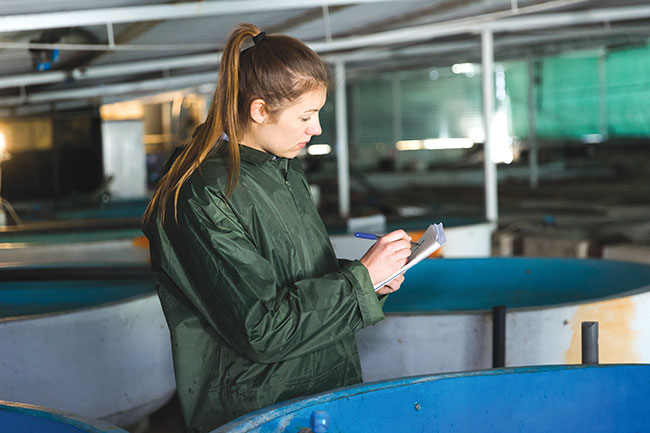
Features
Business Management
Systems management
Tips for maintaining and monitoring your hatchery systems
May 8, 2020 By Ron Hill
 Photo: © JackF / Adobe Stock
Photo: © JackF / Adobe Stock Because fish farmers must maintain the environment for their stock, providing water and oxygen, the risk of catastrophe always looms over farms, at least in mild form. Despite the best intentions, disasters small and larger, still happen around the industry. Proper setup with suitable redundancies and a good monitoring and alarm system are the best defense, but humans doing checks are still integral to supplementing monitoring by sensors. These checks will allow the farm to catch changes in the system and fish, and implement appropriate adjustment, heading off alarms instead of reacting to alarms.
Human eyes can also notice important issues that might not trip sensors, as well as evaluate trends or changes.
What and when
What is checked and when it is checked will depend on the operational needs of the farm; the more vital the system the more often it should be checked.
Checks that are done multiple times daily should be spread out strategically throughout the day so that the system is monitored at regular intervals. Morning checks are essential to ensure nothing has happened or changed during the night period when no one is working.
All vital equipment should be checked, as well as all water systems, oxygen systems and the fish themselves. Likewise, everything should be checked at the end of the shift before the staff leaves for the day to make sure there are no issues overnight and anticipate any problems. Many hatcheries operate night rounds, where the systems are all checked a third time in the evening hours after work has ended.
System checks
It is extremely important to remember that the monitoring system at the hatchery is a piece of equipment that can fail or have technical and operating issues – just like any other piece of equipment.
Alarms should be checked at frequent interval to ensure the probes are in place, the alarm ranges are set and the alarm itself is active. Alarms, such as float switches that have not been active for some time, should be tested regularly to ensure the sensors still activate the alarm.
Double-check
Anytime a task has been completed or changes have been made, that system and the fish tank should be checked visually by multiple people to ensure everything had been returned to normal operation. After fish sorts, grading events, weight sample or any time the fish are handled and everything is cleaned up and back to normal operations, one person should inspect the tank to ensure everything is turned on and back in place.
This principle of the double-check is very effective at catching things large and small, and is also a good way to teach and evaluate new employees.
Some workers take offense at having their work and work areas double checked, especially by new or young workers, but the consequences of mistakes in fish farming are too costly for anyone to get upset. Hatchery managers should communicate to all workers that double checks are a part of the fish husbandry and monitoring system.
Print this page





